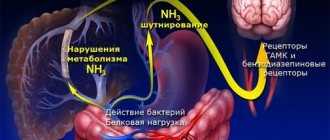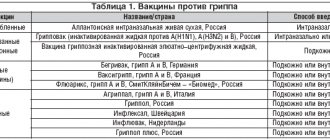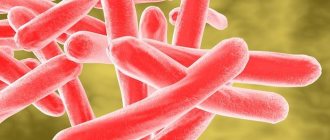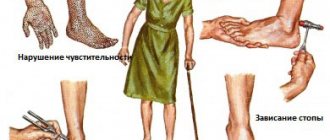Article verified by Euromed Kids doctors
There are many infectious diseases that affect the digestive system. Common symptoms of an intestinal infection:
- intoxication (fever, headache, weakness);
- stomach ache;
- nausea and vomiting;
- diarrhea.
In addition to these symptoms, some intestinal infections also have their own manifestations, for example, blood in the stool or a specific type of pain, which can be important for diagnosis.
Diagnosing intestinal infections is not always easy. We recommend contacting us to conduct a rapid test for intestinal infections to quickly and correctly select the method and place of treatment.
How does an intestinal infection occur?
Viruses, bacteria and protozoa that cause intestinal infections live in the stool, saliva, urine and vomit of patients. Then they can get into water, food, and various objects, and thus infect other people. Therefore, measures to prevent intestinal infections are to wash your hands, as well as fruits, vegetables and berries, maintain hygiene after using the toilet, do not drink from the same bottle with others, use only your own spoon and fork.
Do not consume unboiled milk; thoroughly boil or fry meat. An intestinal infection can be contracted by swimming in dirty water and in many other ways. Some intestinal infections, especially viral ones, are transmitted through household contact.
Prevention of intestinal flu
There is no vaccine for intestinal viruses. Therefore, the only way to avoid infection and prevent further spread of the infection is to follow the rules of hygiene:
- Always wash your hands after returning from the street, the toilet, or traveling on public transport.
- Wash all vegetables and fruits (even bananas and kiwis) before eating.
- Drink only boiled and bottled water, not raw (!).
If someone in the house is sick:
- Carry out wet cleaning daily. Wipe all surfaces and objects that a sick person comes into contact with (door handles, plumbing fixtures, especially the toilet seat, children's potty). Viruses are resistant to alcohol and ordinary detergents, so use disinfectant and chlorine-containing household chemicals.
- Dishes, bed linen, and hand towels must be individual.
- Wash all clothes that may have traces of vomit or feces on them immediately at a temperature of at least 60°.
Be healthy!
What organs are affected by intestinal infections?
Intestinal infections can be classified according to the organ that has been “attacked” by microbes:
- gastritis - inflammation of the gastric mucosa. It manifests itself as pain in the abdomen above the navel, constant nausea, and repeated vomiting. Diarrhea is not typical, but there may be loose stools 1-4 times. Acute infectious gastritis usually develops when infected with Staphylococcus aureus (food poisoning) or viruses.
- gastroenteritis - inflammation of the mucous membrane of the stomach and small intestine. It manifests itself as pain in the abdomen around the navel, vomiting, frequent stools, first mushy, then watery, with undigested food debris. Usually develops with viral intestinal infections or damage by pathogenic strains of Escherichia coli.
- enteritis - inflammation of the mucous membrane of the small intestine. It manifests itself as frequent watery stools without nausea, vomiting and abdominal pain. Enteritis can develop, for example, with cholera (but also in other cases).
- gastroenterocolitis - inflammation of the mucous membrane of the stomach, large and small intestines. It manifests itself as abdominal pain, pain during bowel movements, frequent loose stools, sometimes with blood and mucus. Characteristic for salmonellosis.
- enterocolitis - inflammation of the intestinal mucosa (small and large). It manifests itself as severe abdominal pain, frequent urge to have bowel movements, loose stools (sometimes in the end only mucus is released). Characteristic of salmonellosis and dysentery.
- colitis - inflammation of the large intestine. It manifests itself as pain in the lower abdomen, diarrhea, sometimes with blood and mucus. Characteristic of dysentery.
Viral intestinal infections
Rotavirus infection
Children most often suffer from rotavirus infection. As a rule, adults have developed immunity, because almost everyone suffered from rotavirus in childhood.
Symptoms of rotavirus:
- temperature rise to 38-39;
- cramping abdominal pain;
- weakness, loss of appetite;
- repeated vomiting;
- diarrhea up to 10-15 times a day, stools are liquid, foamy, brown-yellow, after 1-2 days - clayey, yellowish-gray;
- sometimes - sore throat, runny nose, conjunctivitis.
There is a Rotatek vaccine against rotavirus. While it is not included in the Russian calendar, it can be done for a fee. We advise you to vaccinate your child, as rotavirus can be very dangerous for children under two years of age, quickly causing dehydration and causing serious complications.
Adenovirus infection
Adenoviral enteritis is commonly called “intestinal flu.” This virus affects the small intestine, stomach, large intestine - all at once. Children get sick more often, but adults too. In addition to the usual route of transmission of intestinal infections, adenovirus can be contracted through airborne droplets through contact with a patient.
Symptoms of adenoviral enteritis:
- abdominal pain;
- moderate nausea and vomiting;
- loose stools several times a day, often with a greenish tint;
- rumbling in the stomach;
- temperature rise to 38 and above (can persist for 3-5 days);
- pallor, dry tongue.
Adenovirus in young children and the elderly is fraught with complications, especially dehydration.
Enterovirus infection (Coxsackie viruses A and B, ECHO viruses)
Enteroviruses are a common name for more than 100 types of viruses that reproduce in the gastrointestinal tract. Almost all of them are pathogenic and dangerous because they can live outside the body for a long time and are extremely difficult to destroy. Thus, enteroviruses can live in moist soil and enter the body through poorly washed vegetables; even in chlorinated water, enteroviruses remain viable for 3-4 months. It is not surprising that enteroviral intestinal infections are very common. Children endure them more severely than adults.
Most often, enterovirus infections begin acutely, with an increase in temperature, which can then either rise or normalize. Diarrhea, nausea, vomiting, weakness, lack of appetite and headache also occur. At the same time, symptoms characteristic of ARVI may appear - itching and sore throat, runny nose and cough.
Enterovirus infection can cause relapses: symptoms subside and then develop with renewed vigor.
Etiology of acute intestinal infections
The etiology of intestinal infections is associated with the entry of the pathogen into the body. There are 3 main routes through which they enter the body:
- through food - usually through food products that have not undergone sufficient hygienic and heat treatment;
- through water - symptoms and etiology of intestinal diseases when infected through water occur when drinking low-quality water;
- during everyday contact - through various objects or dirty hands.
Bacterial acute intestinal infections are often caused by bacteria such as salmonella, E. coli, and viral ones - by the entry into the body of rotaviruses, enteroviruses, etc. Severe clinical symptoms occur with amoebiasis and giardiasis, which are relatively rare causes.
Bacterial intestinal infections
Botulism
Botulism is a rare but dangerous intestinal infection, as it affects the nervous system, leads to extremely serious consequences and is difficult to diagnose. Botulism can be contracted from eating home-canned food (no outbreaks associated with factory-made canned food have been reported in recent decades), or less commonly through contact with someone who is sick (usually infants).
Botulism begins with short-term nausea and vomiting, then a feeling of fullness in the abdomen occurs - a consequence of paresis (partial paralysis) of the intestines and stomach. Then muscle weakness, dry mouth, and visual disturbances (fog before the eyes) appear. By the end of the first day of illness, respiratory failure may develop. Mortality without treatment is 30-60%. With a timely diagnosis (this can be difficult due to the fact that this infection is rare, and the manifestations are easily confused with many other diseases), the victims are given an toxoid, and, as a rule, a gradual recovery occurs within 2-3 weeks.
Dysentery (shigellosis)
Dysentery is a common disease caused by Shigella bacteria. Amoebic dysentery, caused by protozoa, also occurs. People of all ages are susceptible to dysentery, but 60% of patients are children under 4 years of age.
Dysentery begins acutely with abdominal pain and stool upset (10-20 times a day). By the end of the first day, “spit-shaped stool” consisting of pus, mucus and blood is characteristic. On days 2-3, the manifestations of dysentery are maximum. The temperature can reach 39, and in severe forms, rise even higher. The patient is pale, the tongue is covered with a brown coating. A characteristic sign of dysentery is sharp pain when palpating the left iliac region. With severe dysentery, serious complications can develop, including peritonitis. Dysentery is extremely dangerous for young children and must be treated in a hospital. The temperature in moderate forms of dysentery usually decreases on the 4-5th day of illness, but complete recovery occurs only after 2-3 weeks.
Bacterial intestinal infections also include salmonellosis, staphylococcal food poisoning and cholera. It is extremely important to distinguish dysentery from food poisoning, and if treatment is necessary, to make it easier for the doctor to quickly and correctly choose an antibiotic.
In our clinic you can undergo express diagnostics in just 1 hour to identify 4 viruses that most often cause intestinal infections! Click to find out more.
How can you tell if dehydration is developing?
Intestinal infections lead to the body losing water and salts (sodium, potassium, chlorine, etc.) due to vomiting and diarrhea. Dehydration is one of the main dangers of an intestinal infection, as it can very quickly lead to death, especially in young children. A parent should be wary if he sees the following signs:
- dry mucous membranes of the mouth and tongue;
- grayish skin;
- saliva viscosity increased;
- the child is lethargic, sleepy;
- the baby’s fontanelle on the head sinks, the pulse quickens;
- the baby peed twice or less in 12 hours, the amount of urine is small, it may be dark, with a strong odor;
- intense vomiting, the child cannot be given anything to drink. In this case, you should go to the hospital, where the child will be given a drip and the fluid balance in the body will be restored.
Intestinal infection
is an acute disease manifested by inflammation of the mucous membrane of the gastrointestinal tract (gastritis, enteritis, colitis, gastroenteritis, gastroduodenitis, enterocolitis, etc.), accompanied by digestive disorders (diarrhea, remains of undigested food in the feces) and caused by various pathogenic microorganisms, capable of entering the intestines through the mouth and causing an inflammatory process in the cells of this organ.
Acute intestinal infection
All intestinal infections are acute, that is, they develop suddenly, have pronounced characteristic symptoms and disappear within a relatively short period of time.
After recovery from an intestinal infection, a person may experience digestive disorders for 1–3 months, which are considered complications or residual effects of the disease. Classification
According to the etiological classification, all intestinal infections are divided into the following types: 1. Bacterial intestinal infections (salmonellosis, dysentery, cholera, typhoid fever, botulism, yersiniosis, escherichiosis, staphylococcal food poisoning, etc.);
2. Viral intestinal infections (adenovirus, rotavirus, enterovirus, reovirus, coronavirus infections, etc.); 3. Protozoal intestinal infections (amoebiasis, giardiasis, etc.). Routes of infection
The source of intestinal infections is a sick person or an asymptomatic carrier, who release pathogenic microorganisms into the external environment with feces and vomit, as well as urine.
The release of microbes into the external environment occurs from the onset of the disease until complete recovery (disappearance of clinical symptoms). And in the case of viral intestinal infections, the release of the pathogen continues for another 2–3 weeks after recovery. The routes of infection with intestinal infections are oral-fecal, household, or, less commonly, airborne. The most common routes of transmission of intestinal infections are oral-fecal and household.
The main reason for the spread of intestinal infections is non-compliance with hygiene standards, such as washing hands before eating, before preparing food, after using the toilet, after contact with a sick person, as well as using shared dishes, towels and other household items.
The most common microbes that cause intestinal infections enter the human body when consuming the following products:
Staphylococcus aureus - enters the body when consuming mayonnaise, custard and puddings contaminated with bacteria;
Bacillus cereus – various rice dishes; Vibrio cholerae - ingestion of unboiled water from open reservoirs and consumption of any food products that have drops of contaminated water on them; Pathogenic strains of E. coli - ingestion of unboiled water from open reservoirs and consumption of any food products that have drops of contaminated water on them; Clostridia – being in a hospital setting; Salmonella – consumption of poorly washed and unheated poultry meat or eggs; Yersinia – consumption of meat and milk contaminated with bacteria; Parahemolytic vibrio - consumption of raw or cooked seafood; As for viral intestinal infections, they are usually transmitted through household and airborne transmission
.
From the point of view of contracting viral intestinal infections, close contacts between people, in which saliva is left on the skin, are dangerous. Symptoms General symptoms of all intestinal infections
Repeated loose stools (100% of cases);
Rumbling and splashing in the stomach (100% of cases); Increased body temperature for various periods of time from several hours to several days (100% of cases); Loss of appetite (100% of cases); Nausea (100% of cases); Pain in various parts of the abdomen (100% of cases); Thirst due to dehydration (90% of cases); Blood in the stool (80% of cases); General weakness (70% of cases); Loss of body weight (60% of cases); Fecal masses are similar in appearance to rice water (60% of cases); Vomiting (20% of cases); Urinary retention (10% of cases). In addition to these symptoms, intestinal infections always lead to the body losing water and salts (sodium, potassium, chlorine, etc.) due to vomiting and diarrhea, which can result in dehydration (dehydration). Dehydration is a very dangerous condition as it can be fatal within a short period of time. Signs of dehydration include the following symptoms:
Persistent vomiting that prevents you from drinking fluids; Lack of urine for more than 6 hours; Urine is dark yellow; Dry tongue; Sunken eyes; Grayish skin tone; The diarrhea stopped, but abdominal pain appeared or the body temperature rose sharply, or vomiting intensified.
Children have severe weakness. drowsiness. apathy. Treatment
Initial therapy for acute intestinal infections of any etiology in children includes diet No. 4, enterosorption and rehydration therapy.
During the entire period of illness with rotavirus intestinal infection, it is strictly forbidden to eat the following foods:
Milk and any dairy products.
Milk can only be fed to breastfed babies. In this case, on the contrary, everything except mother's milk is excluded from the baby's diet; Fried, fatty, spicy Fresh fruits and vegetables; Carbonated drinks and juices. Smoked meats and sausages Sweets and chocolate Flour products The following products are allowed:
cereal porridge, eggs no more than 1-2 per day, boiled or in the form of a steamed omelet.
light fat-free broths boiled meat (chicken, beef, rabbit, fish) low-fat fermented milk products fruit purees (baked apples or bananas), vegetables (potatoes, pumpkin, broccoli, carrots) crackers, unsweetened dry biscuits. decoctions of dried blueberries, quince, rose hips, weak green tea. If there is intestinal pathology in an infant, do not stop breastfeeding. A sick baby becomes capricious and lethargic. His appetite is weak, so it is important to put the baby to the breast more often than usual. For bottle-fed babies, it is recommended to reduce portions, while the frequency of meals should increase. In acute intestinal infections occurring with reactive pancreatitis, there is a violation of fat absorption and the appearance of steatorrhea - the stool is copious and shiny, light gray with an unpleasant odor. In this case, a mixture is introduced, which contains medium-chain triglycerides as a fat component, which practically do not require pancreatic lipase for absorption (Nutrilon Pepti TSC, Frisopep). The most common form of enzymatic deficiency in acute intestinal infections is disaccharidase deficiency. In this case, there is frequent “splashy” stool, watery with a sour smell, bloating, regurgitation and anxiety after feeding. For lactose deficiency, it is recommended to use adapted low-milk mixtures (Low-lactose Nutrilon, Frisopep, Humana LP + MCT, etc.) or soy mixtures (Nutrilon Soya, Frisosoy, Humana SL, Similak Izomil, etc.) Protein deficiency occurs due to impaired utilization, absorption, or due to the loss of endogenous protein, especially in children with initial malnutrition. Correction of protein losses is carried out by prescribing hydrolyzed mixtures (Nutrilon Pepti TSC, Alfare, Pregestimil, Frisopep). The period of adherence to these diets is at least 3 months, and more often from 6 to 12 months. Enterosorbents
should be prescribed to all patients, regardless of the etiology and severity of the disease, at the earliest possible stage of the disease - this allows for rapid relief of diarrhea.
Preference is given to synthetic and mineral enterosorbents. On average, taking enterosorbents can last 5-7 days, but early discontinuation of the drug is possible - with stable normalization of stool. Rehydration therapy
is carried out in 2 stages.
At the first stage, it is necessary to replenish losses caused by vomiting and/or loose stools, therefore, in a fairly short period of time (6 hours), the child should receive a volume of fluid at the rate of 50-80 ml/kg of body weight. At the second stage, current losses are replenished, so rehydration is carried out more slowly, at the rate of 80-100 ml/kg of the child’s body weight over the next day. The duration of this stage may vary and depends on the condition of the individual patient. For rehydration in children, you can use ready-made glucose-salt hypoosmolar (osmolarity 245 mOsm/l) solutions, as well as drinking non-mineral water. According to WHO recommendations, indications for antibacterial therapy are amebiasis, typhoid fever, dysentery, and cholera. In addition, antibiotics can be prescribed for bacterial acute intestinal infections, accompanied by symptoms of colitis (including hemorrhagic); in severe and generalized forms of the disease; for moderate forms of the disease, all children under 2 years of age, as well as patients at risk, regardless of age. For viral acute intestinal infections, accompanied by copious watery stools, antibiotic therapy is not advisable. OCI of combined etiology requires an individual approach to therapy in each specific case. In the acute period and the period of convalescence, correction of dysbiotic disorders is required using prebiotics, probiotics, synbiotics,
How to feed a child with an intestinal infection?
If you are being treated at home and your child is vomiting and has diarrhea, the most important thing is to give your child the right amount of water. Often, if a sick child drinks several sips at once, this can trigger vomiting and he will lose even more fluid. Therefore , it is recommended to feed the child every 5-10 minutes, giving him 5-15 ml of liquid at a time. You should not give your child only clean water, as this can lead to a salt imbalance.
You can give your child a pharmaceutical rehydrate solution (for example, Regidron) or prepare such a solution yourself. However, if the child does not drink at all, the choice should be made in favor of any liquid that he agrees to swallow.








